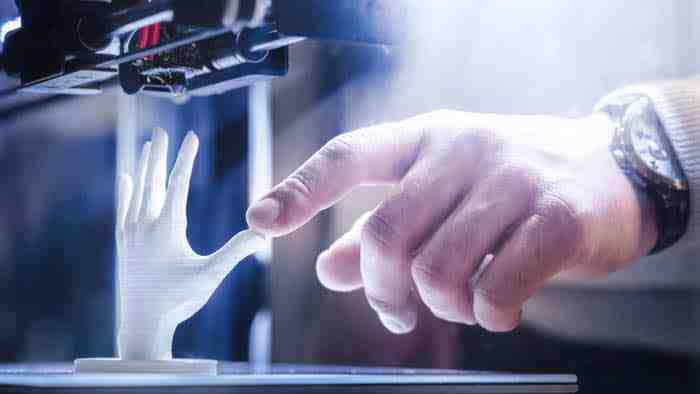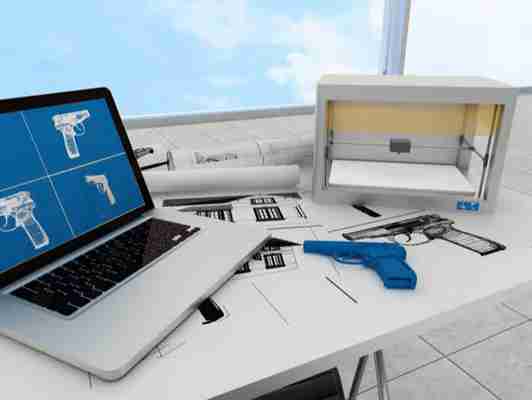When most of us think about 3D printing, nothing malicious comes to mind. You probably think about someone 3D printing a small toy, or even a patient receiving a 3D printed hip.

Although there are many benefits, the security risks from 3D printing range from compromising our privacy to threatening human lives.
Fooling your phone
Recently, an Imgur user posted that he was able to fool the Samsung Galaxy S10 with a 3D printed finger. If you only use fingerprint security, a hacker using this technology could 3D print your finger and access your information in less than 15 minutes.
 Recently,
Recently,You might think that getting your fingerprint is difficult, but it is easier than you would think. The Imgur user darkshark was able to do so by photographing his fingerprint on a wine glass. From there, the process of printing the fingerprint took less than three minutes.
Many people not only use fingerprint scans to protect their phones but also their bank accounts. Through 3D printing, having your fingerprint stolen can be just as damaging as having your credit card stolen.
Access to guns

The truth about 3D printed guns is that they aren’t the best option. They’ve known to be unreliable, and often times fragile. If you want a gun that works, you’re better off a real one. However, that does not mean that 3D printed guns aren’t dangerous.
The biggest issue with 3D printed guns is their availability. If someone has access to the necessary materials, they can print as many guns as they want minus whatever background checks are necessary. Recently, a man in Dallas was arrested after he was found with a partially 3D-printed weapon and a hit list. Although he was caught before he carried out his mission, this should be a wake-up call for government leaders.
Not even John Wick can commit a major act of terrorism with a 3D gun. However, availability and the ability to bypass regulations make them a big problem.
Life-threatening design flaws
A 2016 report from a Johns Hopkins University research team showed how hackers can put in an intentional design flaw into a drone.
The team “hacked” into the schematics for a drone, and put a few design flaws into the propeller. The flaws were naked to the human eye but were so damaging that it caused the drone to crash after less than two minutes of flying.
The report raised the question, “If this happened to a drone, could it happen to something bigger?”
“With digital becoming physical, you could implant weaknesses into airplanes, into military tanks, into buildings. You could target people by implanting some kind of flaw that causes their personal devices to critically malfunction,” said Troy Smith, an associate economist for the RAND Corporation.
What should we do about it?
The positive impacts of 3D printing far outweigh the negative. For example, doctors are now able to 3D print blood vessels and some organs for human use.
This whole issue comes down to both cybersecurity and regulation.
Despite being a flimsy copy , a 3D printed gun is still a gun and is still capable of killing people. Although the common man might not be able to hack into Boeing and screw up the design of a plane, there are hackers with these capabilities.
We need to take keeping 3D printable gun blueprints out of criminals’ hands as seriously as we do with over-the-counter guns. We also need to upgrade our cybersecurity.
When it comes to 3D printable fingerprints, it’s worth the extra 15 seconds to create a password for added security.
More Softonic Articles
5 tips to prevent security issues with your phone ►
8 tricks to strengthen your WhatsApp security ►
7 mistakes that put your internet security at risk ►
8 tricks to boost your security on Google Chrome ►
